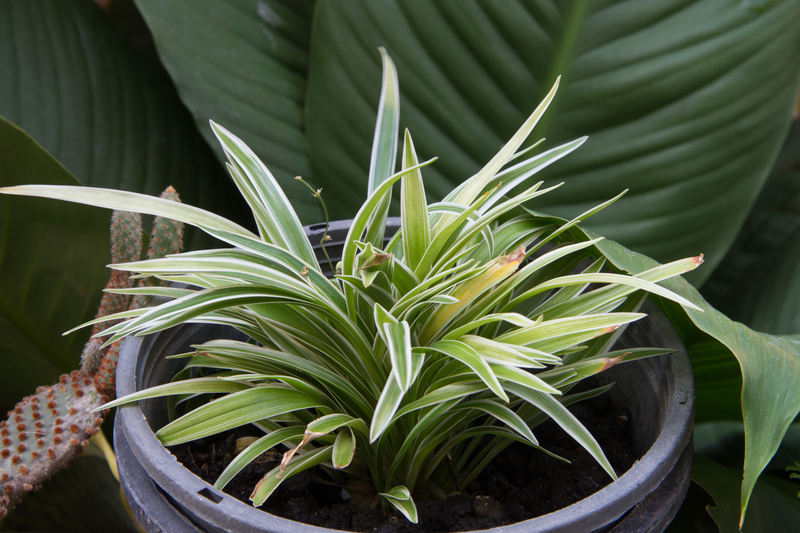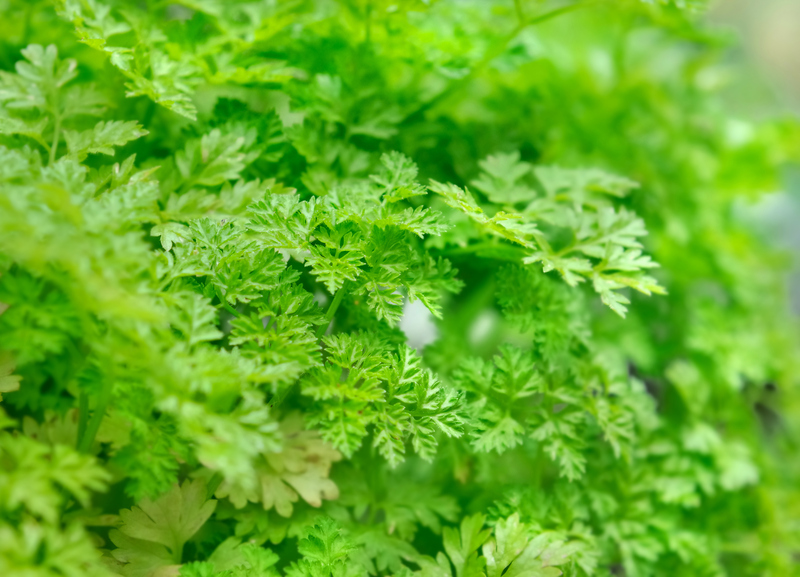3 Proven Strategies for Successful Weed Management
Posted on 27/05/2025
3 Proven Strategies for Successful Weed Management
Weeds are an ever-present challenge for gardeners, farmers, and landscapers worldwide. Managing unwanted vegetation is crucial for maintaining healthy crops, lawns, and gardens. Successful weed management does not rely on a single tactic but combines multiple effective strategies. In this guide, we will explore three proven strategies for weed management that use science-backed methods, practical advice, and actionable tips to deliver outstanding results.

Why Is Weed Control Important?
Weeds compete with prized plants for resources such as water, nutrients, sunlight, and space. Unchecked weed growth can drastically reduce crop yields, hamper lawn aesthetics, and harbour pests or diseases. By prioritizing comprehensive weed control, you protect your investments while fostering healthier, more resilient landscapes.
Negative Impacts of Weeds
- Reduced Yields: Weeds outcompete crops for vital resources, lowering overall yield and quality.
- Disease and Pest Reservoirs: Weeds can host harmful insects and pathogens, threatening desirable plants.
- Allelopathy: Some weeds release chemicals that inhibit germination and growth of crops or garden plants.
- Increased Maintenance: Weedy areas require more labor and resources to manage.
- Aesthetic Concerns: Weeds disrupt the uniformity and beauty of lawns, gardens, and landscapes.
To combat these threats, an integrated approach is essential. Let's dive into the three proven weed management strategies that will help you achieve lasting success.
Strategy 1: Preventative Weed Management
An age-old adage claims, "An ounce of prevention is worth a pound of cure." Nowhere is this truer than in weed management. Preventive tactics focus on stopping weeds before they emerge, minimizing the need for more aggressive or expensive interventions later on.
Components of Preventative Weed Control
- High-Quality Seed and Planting Material: Avoid introducing weed seeds by using certified, clean seed and plant transplants.
- Mulching: Mulch acts as a physical barrier, blocking light and inhibiting weed germination.
- Proper Lawn and Crop Establishment: Dense, healthy plantings shade out potential weed seedlings by limiting available sunlight and space.
- Sanitation: Clean equipment, tools, and footwear before moving between fields or gardens to avoid spreading weed seeds.
- Timely Mowing: Keep lawns and fields cut to the recommended height to prevent seed production in existing weeds.
Best Practices for Mulching
One of the most effective preventive weed control measures is mulching. Organic mulches like bark, straw, or compost provide nutrients as they break down, benefiting soil health. Synthetic mulches, such as landscape fabric or plastic, offer longer-lasting weed suppression for vegetable beds and ornamental areas. Remember to:
- Maintain mulch layers of 2-4 inches depth for optimal weed control.
- Keep mulch a few inches away from tree trunks and plant stems to avoid rot.
- Replenish mulch annually as it decomposes or becomes thin.
Strategy 2: Cultural and Mechanical Weed Management
A robust weed management strategy embraces both cultural and mechanical tactics, which disrupt the weed life cycle and create conditions unfavorable to their growth. By understanding and leveraging these techniques, you can achieve long-term suppression with minimal chemical input.
Cultural Weed Control Techniques
- Crop Rotation: Rotating crops with different growth habits interrupts weed life cycles, reducing soil seedbanks.
- Cover Crops: Plant fast-growing species like clover or rye during fallow periods to shade out weeds and improve soil health.
- Adjusted Plant Spacing: Tighter spacing between rows or plants leaves less available light, suppressing weed emergence.
- Irrigation Optimization: Use drip irrigation or soaker hoses to concentrate water near crops, limiting moisture available to weed seeds.
Mechanical Weed Removal
- Tillage: Tilling the soil uproots existing weeds and buries their seeds, although excessive tilling can disrupt soil structure.
- Hand Pulling: Regular removal by hand, especially after rainfall when soil is moist, is effective for small-scale plots and persistent perennials.
- Hoeing and Cultivation: Using a hoe or cultivator disrupts seedlings before they take hold--focus on shallow cultivation to avoid bringing more seeds to the surface.
- Mowing: Routine mowing prevents seeding in annual weeds, reducing spread and reestablishment.
For a comprehensive weed control program, integrate mechanical and cultural practices throughout the growing season. This approach reduces the weed seed bank and keeps problem species from gaining a foothold.
Strategy 3: Chemical and Targeted Herbicide Application
While non-chemical approaches form the backbone of sustainable weed management, judicious use of herbicides can provide additional control--especially for challenging infestations. The key is to selectively target weeds while minimizing impacts on desirable plants and the environment.
Understanding Herbicide Types
- Pre-emergent Herbicides: Applied to soil before weed seeds germinate, these prevent establishment. Examples include pendimethalin and trifluralin for lawns and gardens.
- Post-emergent Herbicides: Used on actively growing weeds, with options for broadleaf or grass selectivity.
- Selective vs. Non-selective: Selective herbicides target specific weed types (e.g., broadleaf only), while non-selective (like glyphosate) kill most plants they contact.
- Systemic vs. Contact: Systemic herbicides translocate within weeds to kill roots, while contact types only kill sprayed foliage.
Guidelines for Safe and Effective Herbicide Use
- Identify Weeds Correctly: Accurate identification ensures appropriate product selection and application timing.
- Read and Follow Label Directions: Labels specify safety precautions, rates, timing, and compatibility with crops.
- Apply at the Right Growth Stage: Young, actively growing weeds are most susceptible to chemical controls.
- Rotate Herbicide Modes of Action: Repeated use of the same product can lead to resistance--rotate chemistries to delay this risk.
- Consider Weather and Drift: Avoid spraying on windy days or preceding rain to prevent off-target damage and run-off.
While chemical weed management is a powerful tool, integrating it with preventive, cultural, and mechanical strategies ensures long-term success and environmental sustainability.
The Importance of Integrated Weed Management (IWM)
The best weed management strategies do not rely solely on one technique. Instead, they combine prevention, cultural and mechanical interventions, and selective use of herbicides within an Integrated Weed Management (IWM) plan. This holistic approach:
- Reduces dependence on any single method or chemical.
- Decreases the risk of herbicide resistance evolving in weed populations.
- Preserves environmental quality and soil health.
- Delivers sustainable, long-lasting weed control results.
By investing in diversified weed control methods, you protect crops, gardens, and landscapes while minimizing costs and maximizing soil vitality for future generations.

Bonus Tips for Successful Weed Control
- Monitor Regularly: Frequent scouting allows for early intervention before weeds can set seed or spread.
- Record and Map Troublesome Spots: Keeping year-to-year records helps anticipate recurring problem areas and respond proactively.
- Practice Patience: Successful weed management is a multi-season process--be persistent and adjust your strategy as needed.
- Promote Plant Health: Well-nourished, vigorous crops and lawns naturally resist weed invasion by outcompeting them for resources.
Common Weed Management Mistakes to Avoid
- Neglecting Prevention: Allowing weeds to go to seed can undo months of hard work in a single season.
- Over-reliance on Chemicals: Excessive herbicide use can damage soil, water, and non-target species.
- Underestimating Weed Seed Banks: Dormant seeds in the soil can sprout for years, so regular vigilance is needed.
Conclusion: Achieving Lasting Weed Management Success
Mastering weed management requires understanding weed biology, integrating preventative, cultural, mechanical, and chemical methods, and adapting to unique challenges in your landscape. By implementing these three proven weed management strategies--prevention, cultural/mechanical control, and targeted chemical use--you build a sustainable defense against unwanted growth. Stay proactive, remain observant, and foster resilience in your planting systems for weed-free success year after year.
Whether you're farming, gardening, or maintaining green spaces, embracing effective weed management strategies will protect your investment, boost crop yields, and create healthier, more beautiful environments for all.

